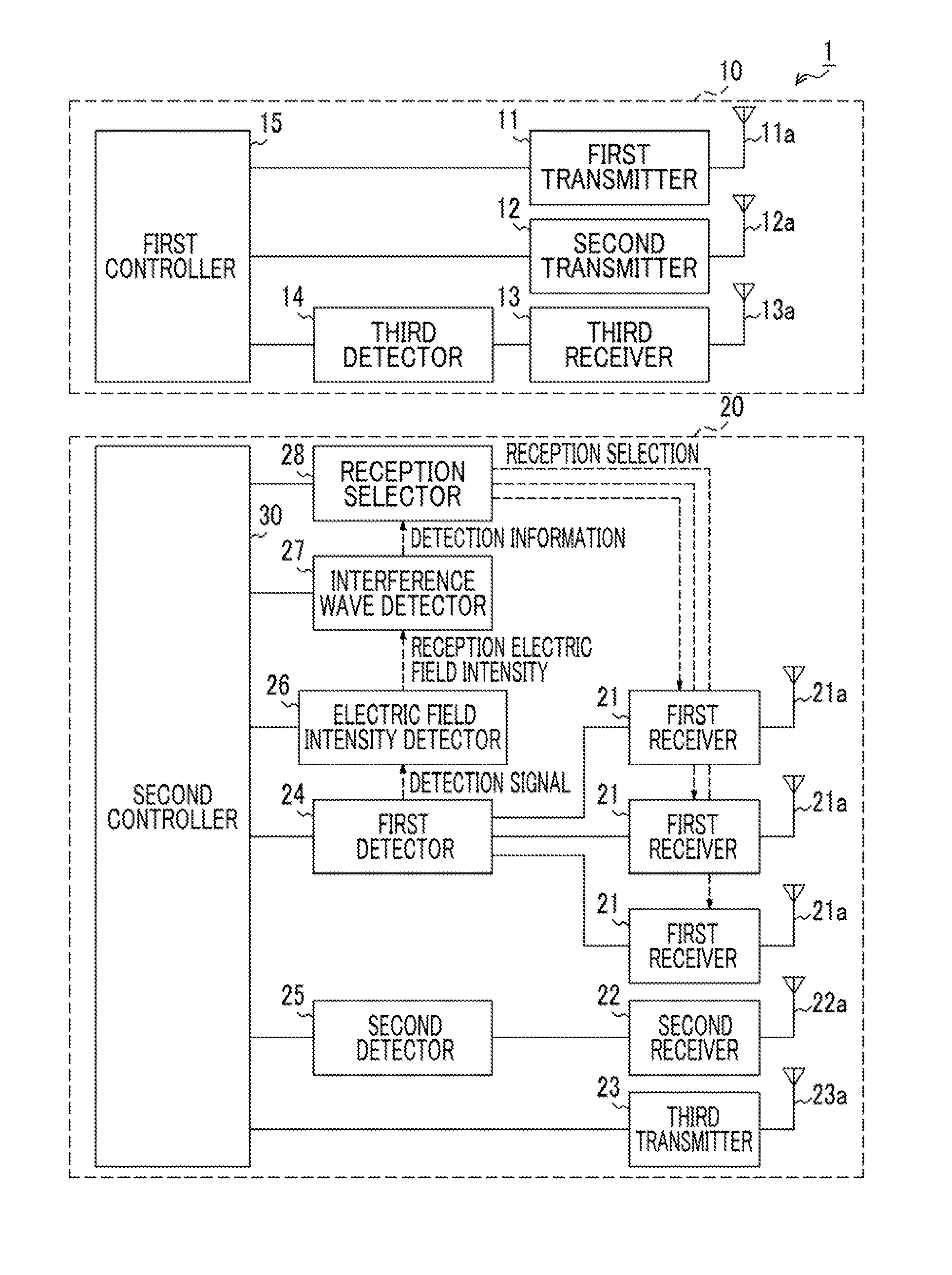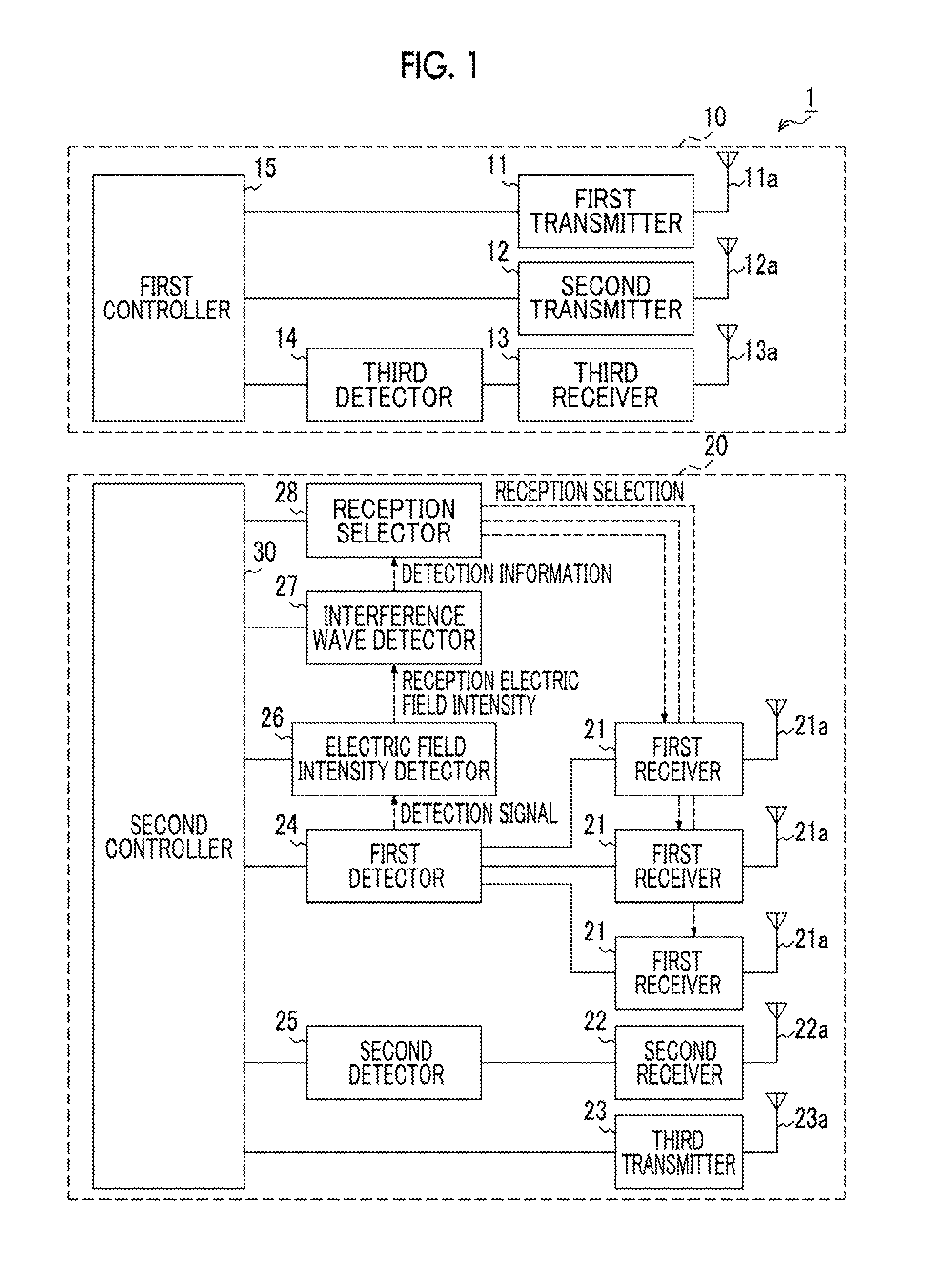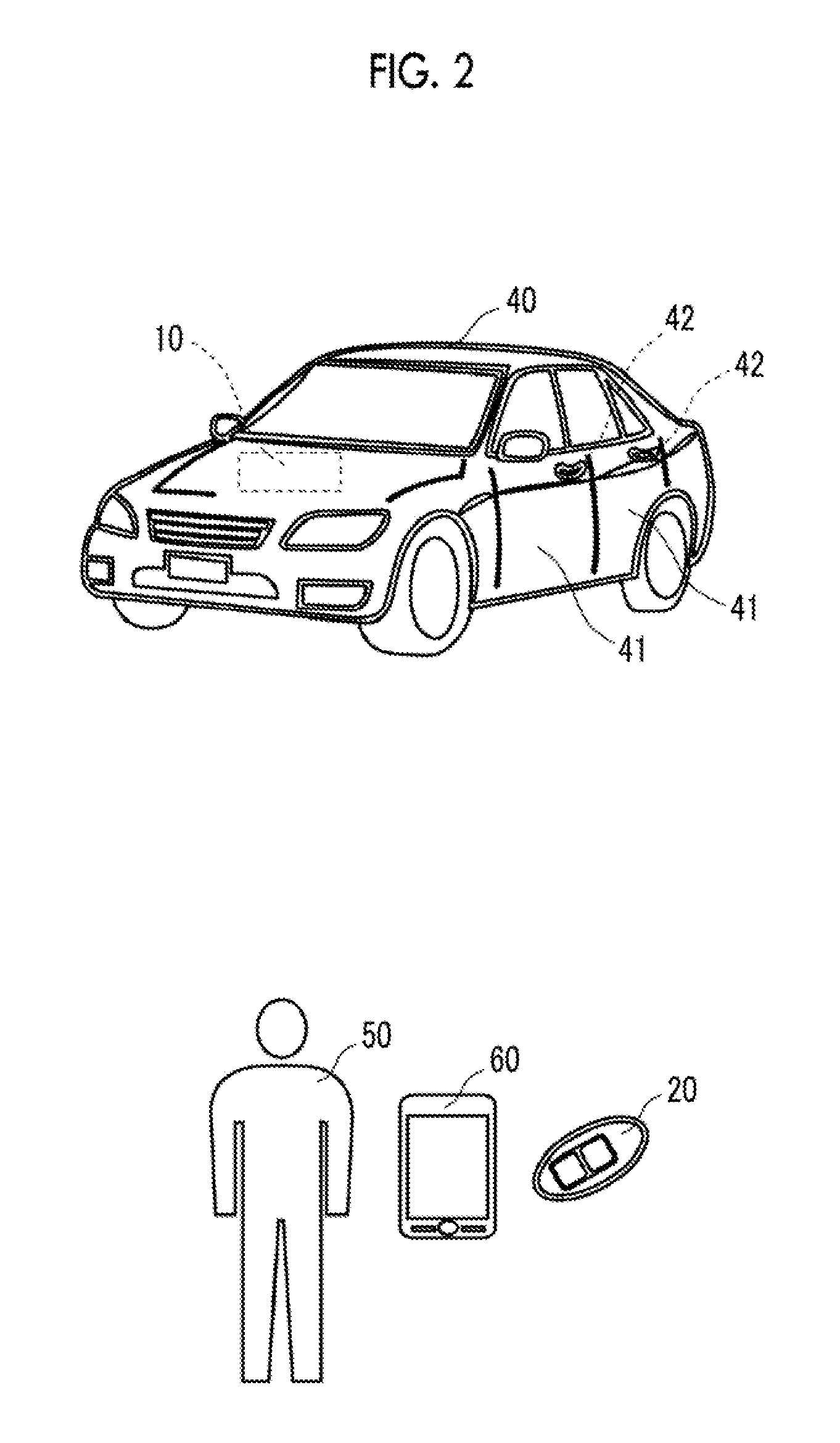Keyless entry system
- Summary
- Abstract
- Description
- Claims
- Application Information
AI Technical Summary
Benefits of technology
Problems solved by technology
Method used
Image
Examples
Embodiment Construction
[0031]Hereinafter, an embodiment of the invention will be described referring to the drawings. In the respective drawings, description will be provided while an X1 direction is referred to as a left direction, an X2 direction is referred to as a right direction, a Y1 direction is referred to as a forward direction, a Y2 direction is referred to as a backward direction, a Z1 direction is referred to as an upward direction, and a Z2 direction is referred to as a downward direction.
[0032]First, the configuration of a keyless entry system 1 according to the embodiment of the invention will be described referring to FIGS. 1 to 3A and 3B. FIG. 1 is a block diagram showing the configuration of the keyless entry system 1 according to the embodiment of the invention. FIG. 2 is an explanatory view showing a use example of the keyless entry system 1 shown in FIG. 1. FIGS. 3A and 3B are explanatory views showing the configuration of a mobile device 20 shown in FIG. 1. FIG. 3A is a top view and ...
PUM
 Login to View More
Login to View More Abstract
Description
Claims
Application Information
 Login to View More
Login to View More - R&D
- Intellectual Property
- Life Sciences
- Materials
- Tech Scout
- Unparalleled Data Quality
- Higher Quality Content
- 60% Fewer Hallucinations
Browse by: Latest US Patents, China's latest patents, Technical Efficacy Thesaurus, Application Domain, Technology Topic, Popular Technical Reports.
© 2025 PatSnap. All rights reserved.Legal|Privacy policy|Modern Slavery Act Transparency Statement|Sitemap|About US| Contact US: help@patsnap.com



